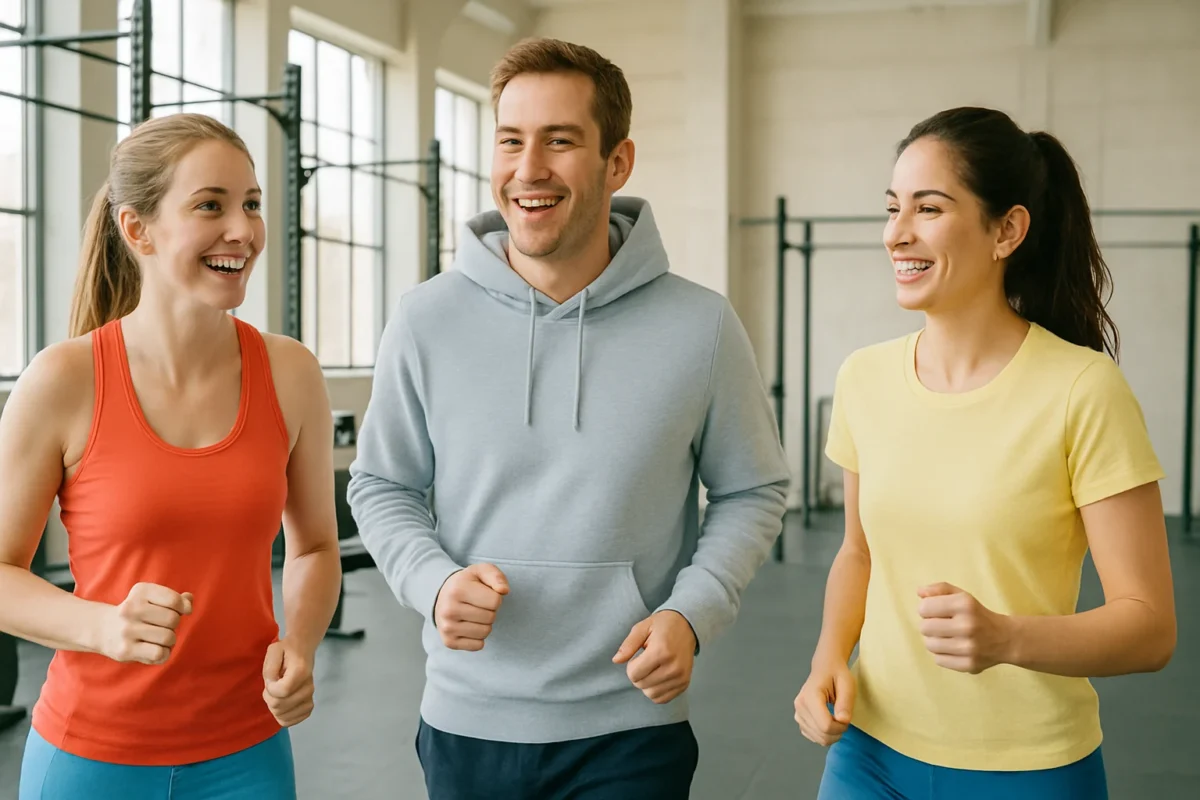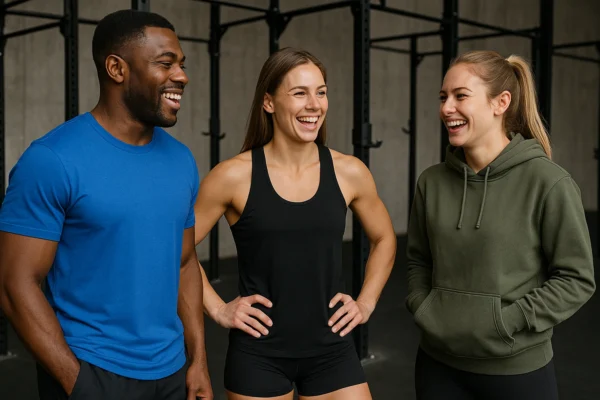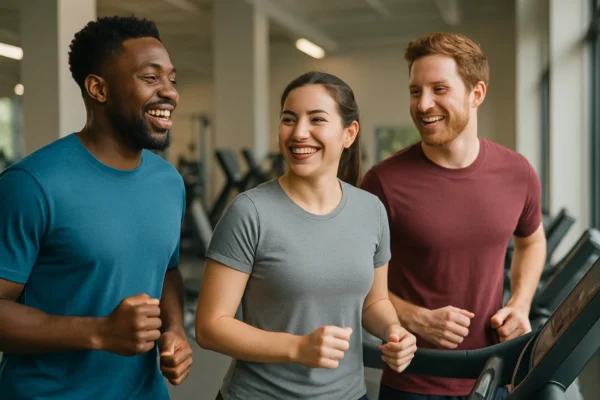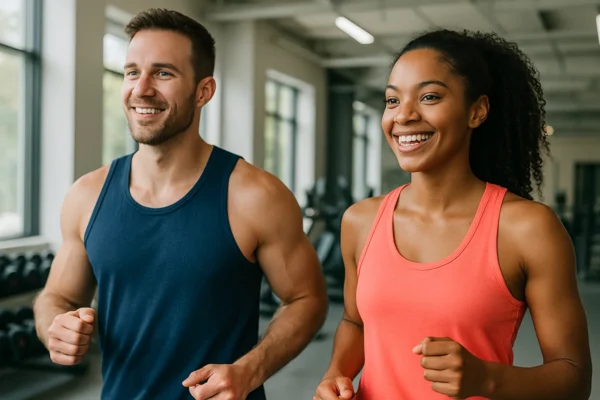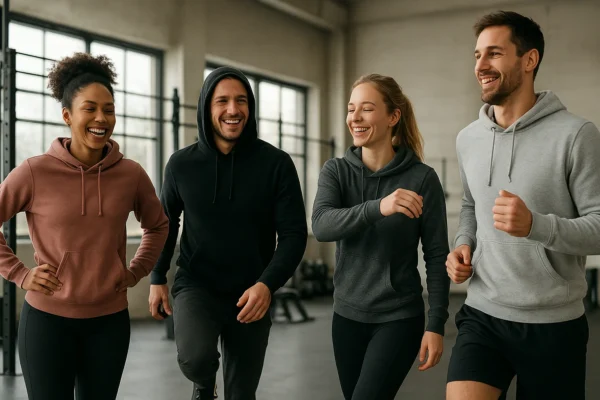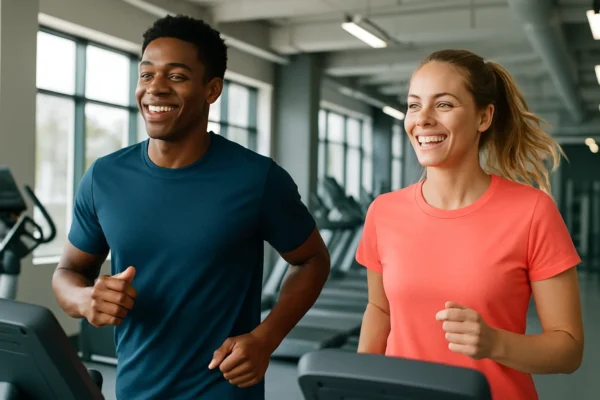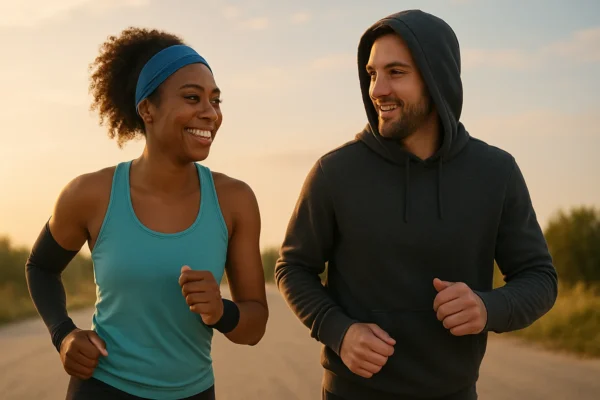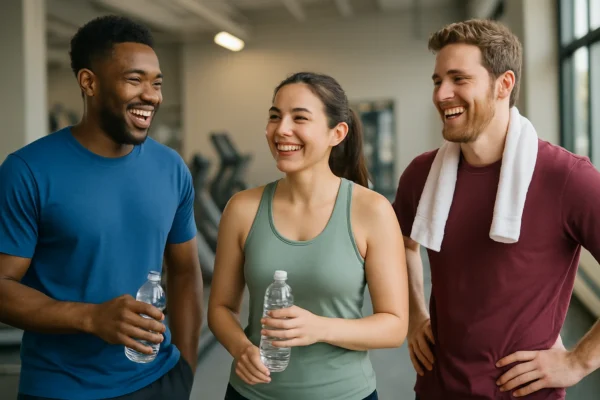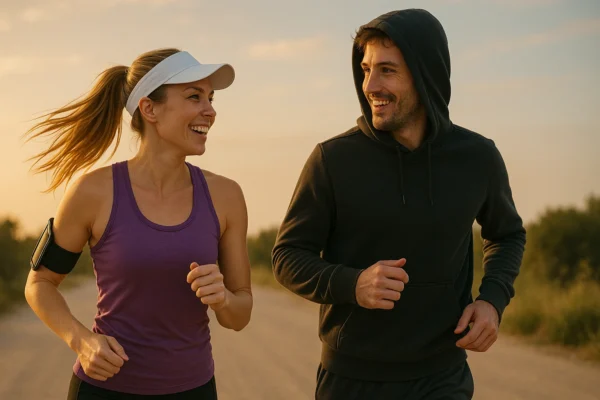T-Shirt vs. Tank Top vs. Hoodie: What’s the Best Gym Clothing for You?
What you wear to the gym isn’t just about looking good, the right gym wear can seriously impact your comfort, performance, and even motivation. Whether you’re lifting weights, hitting a cardio session, or flowing through a yoga class, wearing something that moves with you (and doesn’t distract you) makes all the difference.
In this guide, we’ll take a closer look at three of the most common gym apparel staples: T-shirts, tank tops, and hoodies — each with its own benefits depending on your workout and preferences. From breathable fabrics to layering needs, your choice often comes down to a mix of exercise type, training environment, and personal comfort.
Let’s break down which option might be the best fit for your fitness routine.
Gym T-Shirts: Performance, Comfort & When to Wear Them
T-shirts are one of the most popular and versatile choices for gym-goers and for good reason. They strike a solid balance between comfort, performance, and coverage, making them a go-to option for a wide range of workouts.
Benefits of Gym T-Shirts
Gym T-shirts offer full upper-body coverage, which is helpful not only for modesty but also for protection against skin friction from benches, barbells, or gym machines. Most modern gym tees are made with moisture-wicking materials — like polyester or synthetic blends — which help draw sweat away from the body and keep you dry during high-effort sessions.
They’re especially useful in moderate to high-intensity workouts where you’re moving a lot, but not necessarily focusing heavily on arm mobility, like HIIT, treadmill runs, or group fitness classes.
Plus, they’re available in countless styles and fits, from fitted performance cuts to looser, more relaxed fits depending on your comfort preference.
Drawbacks of Gym T-Shirts
Despite their versatility, T-shirts do have some downsides. For workouts that involve a lot of upper-body movement, like heavy lifting or functional training, they can feel a bit restrictive around the shoulders or arms, especially if they’re not designed with stretchable materials or an athletic cut.
Additionally, compared to sleeveless options like tank tops, T-shirts offer less ventilation, which can make them feel warmer during intense training or in non-air-conditioned environments.
Ideal Use Cases
Gym T-shirts are a great match for:
- Cardio sessions (like treadmill, rowing, or elliptical)
- Circuit training and full-body workouts
- General gym routines that don’t demand extreme upper-body mobility
- Ideal for gyms with strong AC, where a bit more fabric helps you stay at a comfortable body temperature.
They’re also ideal for people who prefer modest gym wear or want a shirt that easily transitions from gym to casual errands post-workout.
Tank Tops at the Gym: When and Why They Work Best
Tank tops are a favorite among many gym-goers, especially those who prioritize freedom of movement and staying cool during intense sessions. With their sleeveless design and open armholes, tank tops offer a unique combination of breathability, performance, and style.
Benefits of Tank Tops
A major plus of tank tops is how freely you can move your arms and shoulders, perfect for exercises that demand full range of motion. This makes them ideal for exercises like overhead presses, pull-ups, or push-ups, where full arm mobility is key.
Tank tops also provide better airflow and ventilation, helping regulate body temperature during high-intensity workouts or in warm, non-air-conditioned environments. For some people, they also provide a mental boost, showing off muscle definition and progress can help reinforce motivation and confidence in the gym.
Drawbacks of Tank Tops
While they’re great for mobility and cooling, tank tops don’t offer much protection. With less fabric covering your upper body, your arms and shoulders are more exposed to friction from barbells or machines, and if you’re training outdoors, there’s a higher risk of sunburn without proper protection.
Additionally, some gyms particularly those with more conservative or professional environments may have dress codes that restrict overly revealing apparel, including certain types of tank tops (like stringers or deep-cut styles).
Ideal Use Cases
Tank tops are a great choice for:
- Weight training and bodybuilding, where freedom of movement is important
- HIIT workouts that generate a lot of heat and sweat
- Outdoor training sessions, like running or bootcamp-style workouts
- Hot or humid environments, where keeping cool is a priority
They’re especially popular among lifters and athletes who want breathable, high-performance clothing without sacrificing range of motion.
Hoodies for Fitness: Function, Comfort, and Ideal Use Cases
While not always the first thing that comes to mind when thinking about gym apparel, hoodies play a specific and useful role in many training routines. They offer warmth, coverage, and comfort, making them a practical addition to any workout wardrobe, especially in cooler conditions or low-intensity sessions.
Benefits of Gym Hoodies
Gym hoodies are especially effective during the warm-up and cool-down phases of your workout. Wearing a hoodie at the start of a session helps increase body temperature and circulation, which can promote better muscle flexibility and reduce the risk of injury as you ease into movement.
They’re also great for retaining muscle warmth post-workout, helping your body transition smoothly into recovery. Additionally, hoodies offer added privacy and coverage, ideal for anyone who prefers modesty or feels more comfortable staying a bit covered up. In colder gym environments or outdoor workouts, they also provide insulation from chilly air.
Drawbacks of Gym Hoodies
That said, hoodies aren’t ideal for every training scenario. If worn during high-intensity workouts or cardio sessions, they can cause overheating fairly quickly, especially if made from thick or non-breathable materials.
Also, depending on the cut and fabric, some hoodies can feel bulky or restrict upper-body movement, particularly during dynamic or compound exercises. For that reason, it’s best to look for hoodies designed specifically for athletic use, often made with lighter performance fabrics and stretch panels.
Ideal Use Cases
Gym hoodies are best suited for:
- Warming up before intense workouts
- Cooling down and post-training recovery
- Stretching or mobility work, especially in cool environments
- Casual gym visits, where comfort is the main goal
- Outdoor runs or jogs in cold weather, where insulation is essential
They’re also great for throwing on before or after a workout, especially if you’re transitioning to errands or heading home without changing.
Choosing the Right Gym Wear for Your Workout and Environment
The right gym top isn’t just about style, it’s about matching your outfit to the type of workout you’re doing and the environment you’re in. Whether you’re sweating through HIIT or stretching through cooldowns, your choice of T-shirt, tank top, or hoodie can have a real impact on how comfortable and focused you feel.
High-Intensity vs Low-Intensity Workouts
For high-intensity workouts like HIIT, CrossFit, or heavy cardio, tank tops are often the best option. Their sleeveless design allows for maximum airflow, helping regulate your body temperature and giving your arms full freedom to move without restriction.
T-shirts strike a great middle ground. They’re ideal for moderate-intensity sessions like circuit training, strength training, or group fitness classes. They provide decent coverage while still allowing breathability, especially when made from moisture-wicking materials.
Hoodies, on the other hand, work best for low-intensity activities, such as stretching, yoga, warm-ups, or cool-downs. They help keep your muscles warm at the start or end of your session and are especially useful in colder environments.
Indoor vs Outdoor Gym Settings
Your workout location matters just as much as the activity itself. If you’re exercising outdoors, you’ll want to factor in weather, sun exposure, and temperature.
For hot climates or summer workouts, tank tops help your body stay cool while allowing sweat to evaporate more easily. In contrast, hoodies are ideal for chilly mornings, evening runs, or outdoor winter training offering insulation and protection from wind or cold air.
If you’re training indoors, layering is key. You might start in a hoodie to warm up, then peel it off once you’re into the main session. In air-conditioned gyms, T-shirts offer enough coverage to keep you comfortable without overheating, while still letting your skin breathe.
And don’t forget: sun protection matters during outdoor workouts. If you’re training in direct sunlight, a light long-sleeve or breathable T-shirt may be better than a tank top to avoid overexposure.
Styling Tips for Gym Clothes That Work as Hard as You Do
Looking good at the gym might not be your top priority but feeling comfortable and confident in your workout clothes can go a long way in keeping you motivated. Choosing the right fit, fabric, and accessories isn’t just about appearance; it can directly affect your performance and focus during a workout.
Choosing the Right Fit
The best gym wear strikes a balance between form-fitting and functional. Clothing that’s too tight can restrict your range of motion, especially during lifts, stretches, or dynamic movements. On the flip side, overly loose shirts or hoodies can bunch up, get caught in equipment, or just feel awkward when you’re in motion.
Look for athletic or performance fits that contour to your shape without clinging too tightly. Many gym tops now include small amounts of spandex or elastane for stretch, so you can move freely without losing structure.
Color and Fabric Choice
If you sweat a lot (which is totally normal), color and fabric matter more than you might think. Dark colors like black, navy, or charcoal can help hide sweat marks, while light grays and some bright colors tend to show moisture more easily.
When it comes to odor control, look for tops made with moisture-wicking, breathable fabrics, such as polyester blends or merino wool. Some performance fabrics even have anti-microbial technology to reduce bacteria buildup and keep you feeling fresher for longer which is a bonus if you plan to wear the same gear post-workout.
Useful Accessories to Pair With Gym Wear
Comfort also comes from the small accessories you choose. A moisture-wicking headband can help keep sweat out of your eyes during cardio or strength training. Compression sleeves or arm bands can support blood flow and muscle stability and also add a bit of personality to your gym look.
Don’t forget basics like breathable socks, well-fitted training shoes, or even a layer-friendly hoodie if you’re transitioning from indoors to outdoors.
Final Thoughts: Picking the Right Top for Every Gym Session
Choosing the right gym top doesn’t have to be complicated, it just needs to match your workout, your environment, and how you like to feel while training.
A T-shirt is the most versatile option, offering balanced coverage and comfort for a wide range of workouts, especially in cooler or air-conditioned spaces. If you’re pushing through a high-intensity session or training in hot conditions, a tank top gives you maximum breathability and freedom of movement. Meanwhile, a hoodie is ideal for warming up, cooling down, or layering when you’re working out in colder environments or just want extra coverage.
Ultimately, your gym wear should support how you move, help regulate temperature, and make you feel confident. When you find that perfect fit — in both function and style — it can help elevate your performance and keep you focused on your goals.

